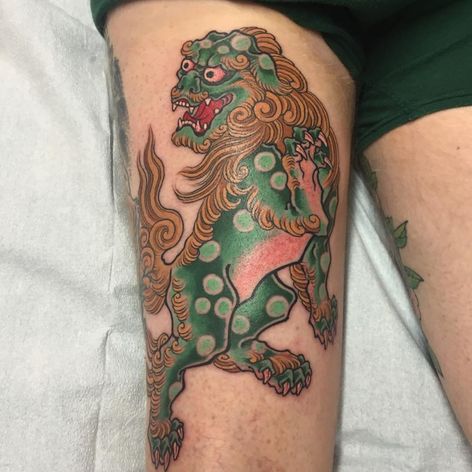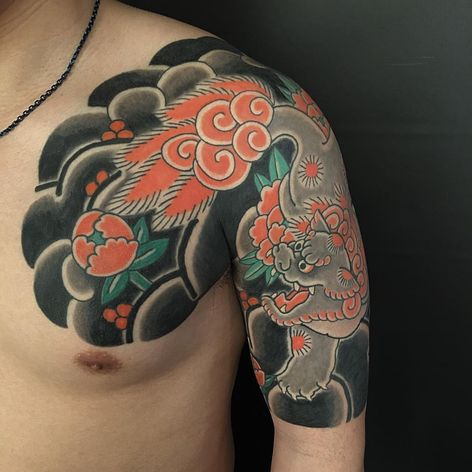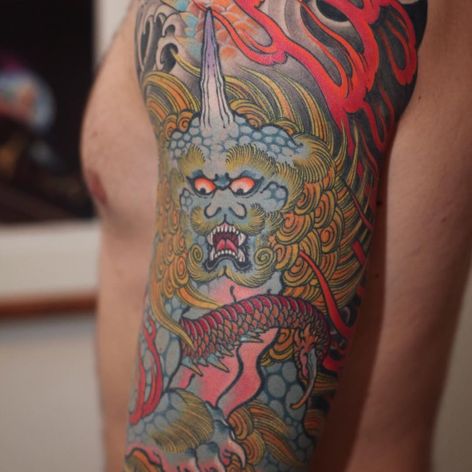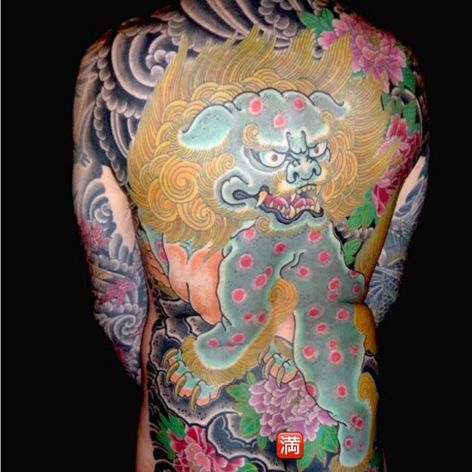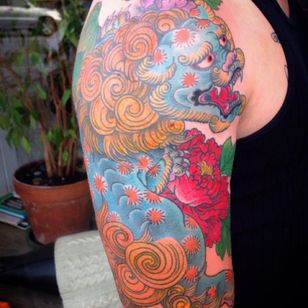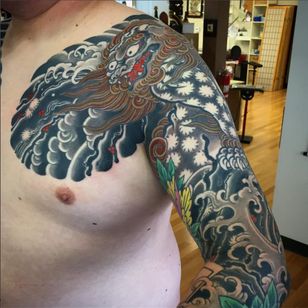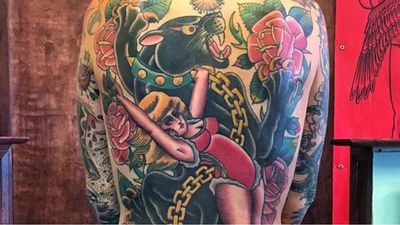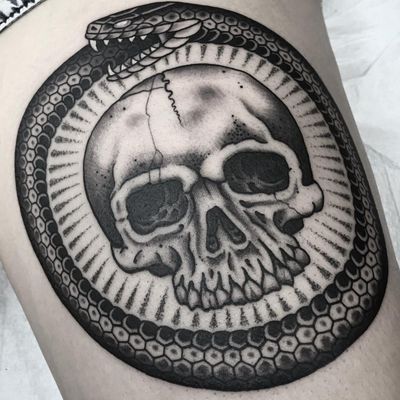Foo Dogs — The Mythological Lions of Traditional Japanese Tattoos
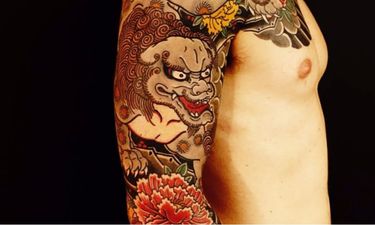
How foo dogs traveled from the steps of imperial palaces in ancient China and into Irezumi.
You’ve probably seen a foo dog — with its fierce expression, glowing eyes, and spotted body — prowling among peonies in a sleeve or back-piece before. These creatures are a common sight in traditional Japanese tattoos, but contrary to what their name implies, they aren’t really dogs at all. They’re actually descended from Chinese lions, which are known as shi and considered the king of all beasts. “Foo dog” is just what westerners started calling them when they first encountered statues of the lions in Japan, where they are referred to as komainu. It’s not exactly clear why people began to mistakenly refer to them as canines, but it most likely stems from issues of translation that arose as depictions of them spread throughout Asia. Other scholars speculate that the misnomer comes from a false association with chow chows or songshi quan, which translates roughly to “puffy lion-dog."
As the confusion behind their name hints at, the history of the image of the foo dog is long and complicated. Depictions of them are believed to be based on real-life lions, which were introduced to China during the Han Dynasty (221 BCE – 206 CE) either as pelts or as live specimens through the Silk Road, when it used to be customary for royalty to exchange exotic animals and furs as gifts. Because of lions’ natural instinct to protect their own, foo dogs became seen as talismans of protection with the power to ward away demons, so wealthy families started commissioning statues of them to place at the entrances to palaces and temples. As technological advancements made it possible to mass produce these sculptures, the artistically embellished lions spread along trade routes, becoming cultural icons in Korea and Japan as well.
During the Edo period (1603-1868), foo dogs cropped up in ukiyo-e (woodblock prints) and leapt into Irezumi shortly later. In prints by Kuniyoshi and Kunisada II, you can even find several illustrations of warriors who have back-pieces featuring foo dogs, showing that they were a popular icons in traditional Japanese tattoos ever since the birth of the style. The longstanding appeal of foo dogs rests not only in their intimidating appearance but also in their rich symbolism. Traditionally, they are depicted in pairs — mirroring the concept of yin and yang — with a female restraining a rambunctious cub under her paw and a male resting his on a globe. It’s believed that the male defends the structure before which it stands, while the female protects those dwelling inside. In this sense, having a tattoo of one of these mythological lions is akin to owning a magical guard dog to watch over your body temple.
To see more traditional Japanese tattoos, follow all of these artists on Instagram. If you’d like to get a bodysuit or sleeve featuring a foo dog to protect you from harm, have one of them design the piece for you.
You just experienced Indomitable, our series where we examine the history and symbolism of traditional Japanese tattoos. We hope you enjoyed learning about the protective properties of foo dogs. If you want to find out more about the motifs in Irezumi, check out these other posts about baku, cherry blossoms, kirins, the Nue, phoenixes, severed heads, and tofu boys.
